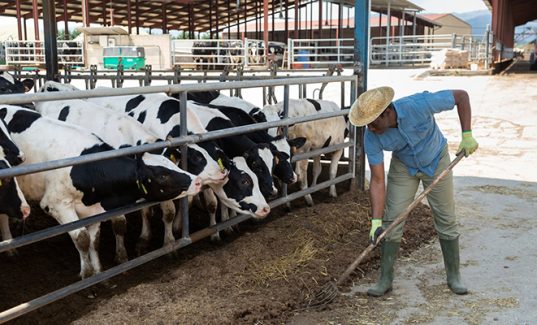It is one of the most potent antibiotics used by U.S. cattle and dairy farmers.
But the strength of the ceftiofur and the frequency with which it’s being misused has created a threat to human health that may overshadow the drug’s effectiveness, a Reuters examination shows.
The U.S. Food and Drug Administration cautioned in 2012 that ceftiofur could pose a “high public health risk,” in part because the drug belongs to a class of antibiotics considered critically important in human medicine. The warning is the FDA’s strongest kind. The concern is that ceftiofur in animals could spawn antibiotic-resistant bacteria.
A Reuters analysis of government data indicates that the risks to human health may be more significant than previously known. Records kept by the U.S. Department of Agriculture since 2013 show that traces of ceftiofur were found at illegal levels in slaughtered animals more frequently than with any other drug. In 2013, ceftiofur alone accounted for one-fourth of all residue violations logged by the USDA.
The residues are not themselves considered dangerous but the traces serve as a warning sign that the drug was used shortly before the animal was killed, thus increasing the chances that the meat contains superbugs, said Guy Loneragan, a veterinary epidemiologist at Texas Tech University. Studies show that ceftiofur, more than most other drugs, can sharply increase the amount of antibiotic-resistant bacteria in an animal.
“It kills off weaker bugs and allows stronger ones to survive and multiply,” Loneragan said. The effect is especially pronounced soon after the drug has been used, studies show.
Zoetis says ceftiofur is safe to use as directed. “The use of ceftiofur continues to be appropriate when used according to the label directions in those animals that are in at-risk situations,” said Scott Brown, vice-president of global therapeutics research at Zoetis.
The stakes are especially high because the drug is part of a crucial class of antibiotics called cephalosporins. The class includes ceftriaxone, a drug that’s vital to treating pneumonia, meningitis and salmonella infections in children, according to the FDA. The use of one type of cephalosporin can compromise the effectiveness of others in the same class.
Economic incentives
Despite the perils, there are economic incentives to misuse ceftiofur. The potent drug can keep a sick cow alive long enough for a dairy farmer to sell the animal to a slaughterhouse.
Hugh Byron ran a dairy farm in Hillsboro, Kentucky, until 2011 and kept cattle until this year. He says he frequently used ceftiofur to treat common infections in his cows. In July 2010, a dairy cow sent to slaughter from Byron’s farm tested positive for 5.61 milligrams of ceftiofur residue per kilogram of tissue sample. That was 14 times higher than the 0.4 milligram level set by the FDA.
Byron admits that he has administered ceftiofur at the end of his animals’ lives hoping they’d hang on, so that a slaughterhouse would accept the cows and pay him.
“We’re talking about our livelihood, our money. We’re trying to save the cow and if we can’t save the cow, we’re trying to salvage it,” said Byron. “In other words, send her to the stockyard and get something out of it. So there’s a temptation to fudge on it.”
One of ceftiofur’s features is a short withdrawal period. In the case of milk, if a cow takes penicillin, the farmer must discard all the milk produced for at least two days and as many as 15 days after the drug is last given. There’s often no withdrawal period for certain ceftiofur products, so a cow can keep producing milk while taking it.
No test for bacteria
The USDA tests animals for traces of antibiotics, to prevent excess levels of drugs such as ceftiofur from entering the food supply. But the residue program doesn’t test for the presence of resistant bacteria. In the case of ceftiofur, those bugs can survive in an animal past the end of the drug’s required withdrawal period, studies show.
Zoetis said the FDA has evaluated ceftiofur’s impact on antibiotic resistance in bacteria and has approved drugs containing the compound as recently as last year.
Those caught misusing veterinary antibiotics face light consequences. Penalties include condemnation of the animal. Further action is extremely rare, an examination of regulatory and court records shows.
The residue testing program has been harshly criticized by federal auditors. A 2010 report by the Government Accountability Office found that the program “is not accomplishing its mission of monitoring the food supply for harmful residues.”
One result of the audit was the implementation two years later of the new residue testing methodology now used by the USDA and FDA.
Source: Alberta Farmer Express




